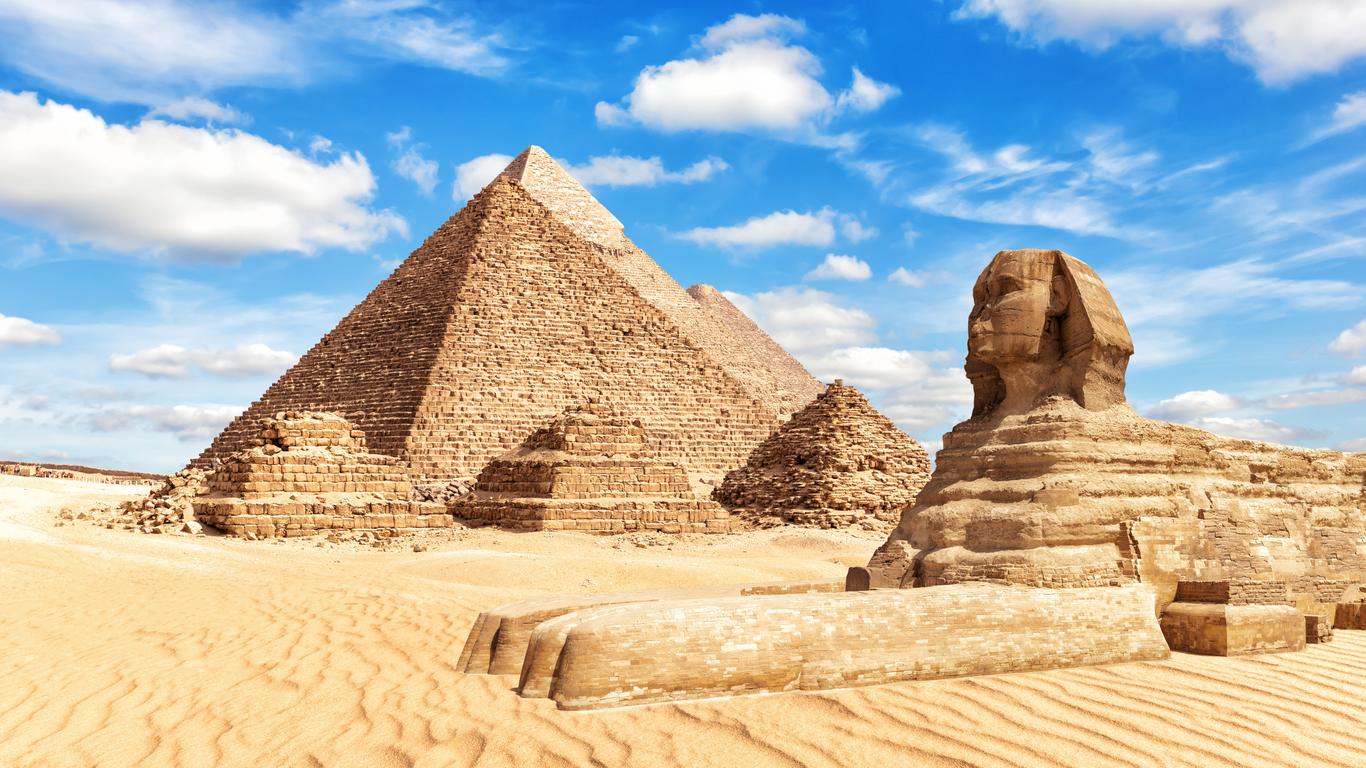The Giza Pyramids are a collection of pyramids and monuments dating back to Ancient Egypt, located in the suburban area of Cairo called Giza, and are the only ancient surviving wonder of the world. They are one of the most famous and recognisable structures in the world, of a distinct and unique triangular design and created to host the tombs of kings and pharaohs. Different and distinct buildings and statues make up the complex of the Giza Pyramids which tower over the expansive desert on one side, and the sprawling city of Cairo, Egypt’s capital, on the other.
There are three pyramids in the Giza complex with the oldest and largest of these called the Great Pyramid, also known as the Pyramid of Khufu, which remains largely intact at the height of 139 metres. Visitors can travel beneath into the tombs and corridors below that lead to large galleries and chambers containing the mummified bodies of ancient royal figures, including the empty sarcophagus of Khufu himself. The other two pyramids are the Pyramid of Chephren, built by the son of Khufu, and the Pyramid of Mycerinus, the smallest of the structures at 62 metres and built from unusually big limestone blocks. Aside from pyramids, the Solar Boat Museum holds a 4,500-year-old solar barque and the famous monument, the Sphinx, guarding the pyramids and desert from a powerful and regal position.
Microbuses are local services navigating the area of Cairo, and many that take routes from downtown to the Giza Pyramids, although for a more comfortable journey visitors can also take a private taxi. Cairo Metro also has links in the direction of the pyramids, although there is no stop in the complex itself. Giza Station is only 10 kilometres away from the city and has links to Cairo Airport.
Egyptologists believe the first person to form the idea of a pyramid structure was the ancient architect, Imhotep, who stacked burial structures called mastabas on top of each other and formed a triangular, stepped structure. It was around the Early Dynastic Period to Late Period that ancient Egyptians built the Giza Pyramids to preserve and honour the bodies of Pharaohs, created by transporting large quarry stones to the site. They believed that the soul stayed with the corpse after death and built the pyramid structure to protect the spirit of the kings and guide their regal transformation into the afterlife.





